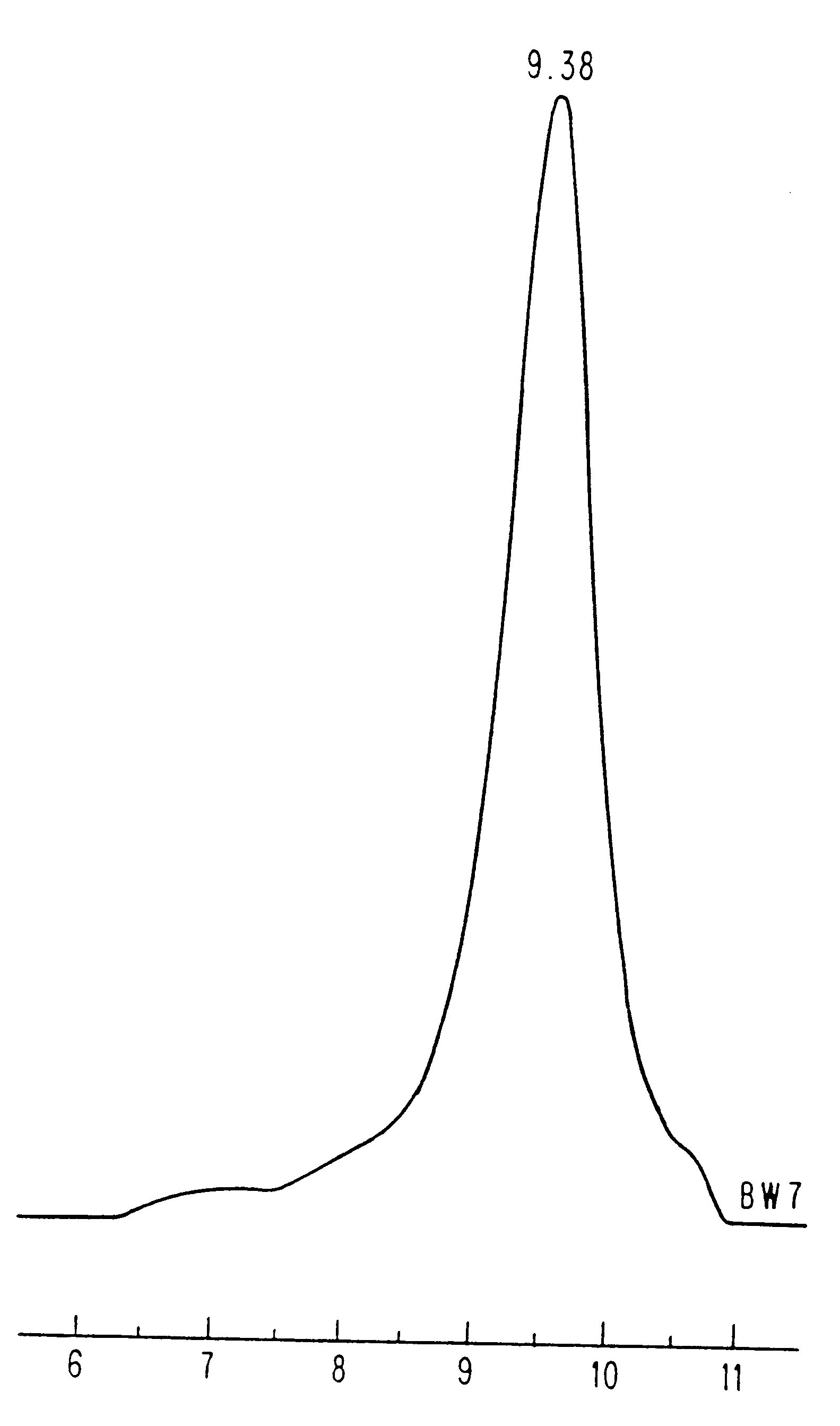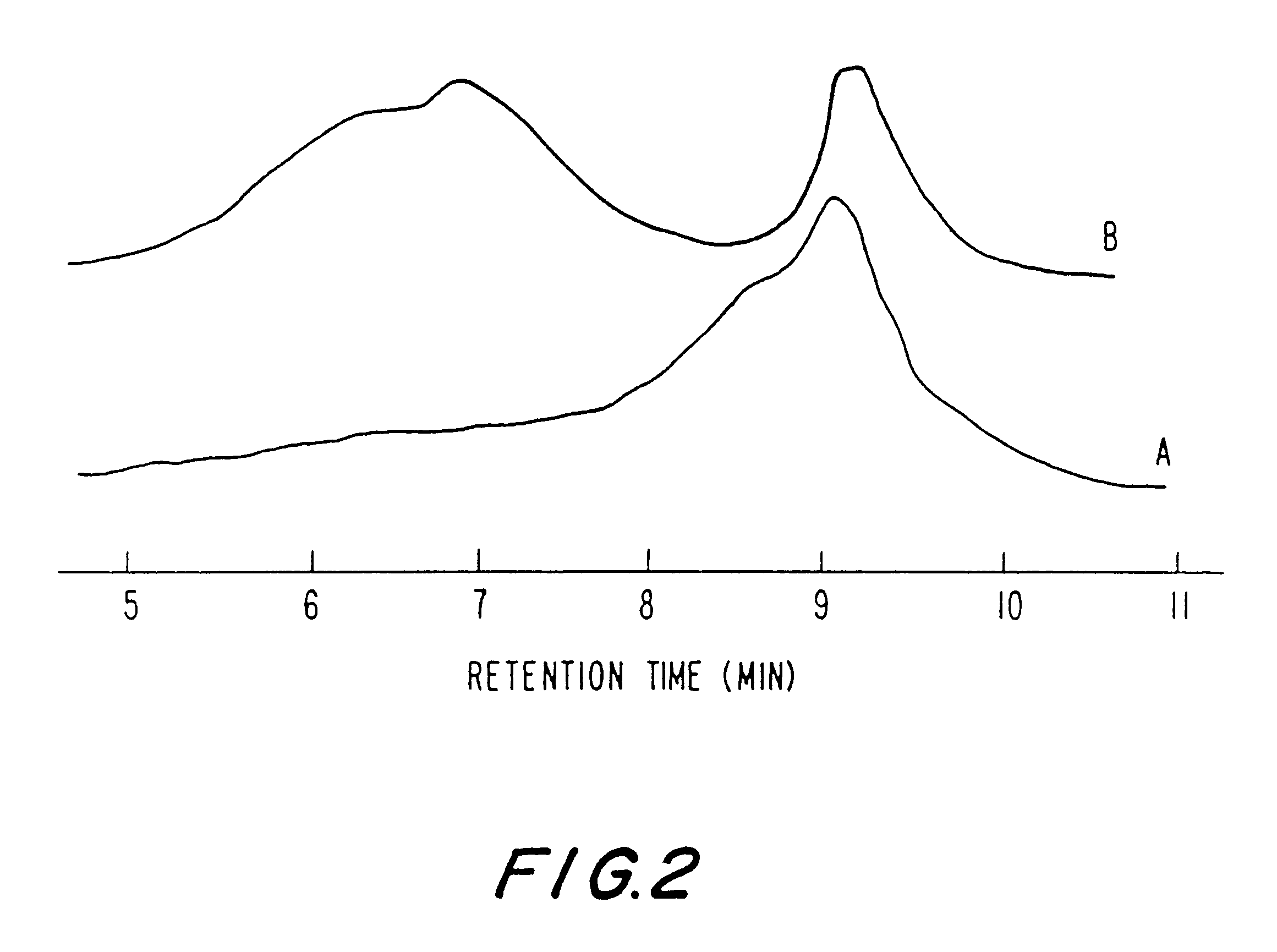Proteinoid carriers and methods for preparation and use thereof
- Summary
- Abstract
- Description
- Claims
- Application Information
AI Technical Summary
Benefits of technology
Problems solved by technology
Method used
Image
Examples
example 2
Preparation of an Acid-soluble Proteinoid by a Thermal Condensation Reaction
750 ml of tetramethylene sulfone is heated to 190.degree. C. in an inert nitrogen atmosphere in a 4 liter flask with stirring. 294 g of glutamic acid is added and the mixture is heated for one-half hour. 362 g of tyrosine is added and the mixture is heated at 190.degree. C. for 3 hours. 330 g of phenylalanine is added and the mixture is heated at 190.degree. C. for 1.5 hours. 266 g of arginine is added and the mixture is heated for an additional 1.5 hours. The hot melt is then poured into 5 liters of water with vigorous stirring. After stirring for about 1 hour, the mixture is filtered and the filtrate is discarded. The cake is reslurried in 5 liters of water, filtered and the cake is again reslurried in 5 liters of water. The pH of the slurry (at 250.degree. C.) was adjusted to 5 using 10% acetic acid solution. The mixture is filtered and the cake is washed with a small amount of water. The washes and filtr...
example 3
Preparation of Proteinoids by the NCA Method Using Amine Initiator
This example illustrates the NCA method for preparing copolypeptides consisting of Asp.Bz, Glu.Bz, Phe, and Tyr components. The NCA monomers of these amino acids were prepared according to the reported method.
The reactions were carried out in tetrahydrofuran (THF) or in dichloromethane using benzylamine (BzNH.sub.2) or 4-methylbenzyl amine (MeBzNH.sub.2) as initiator at room temperature ([M]=10%). The characterization of the resulting copolymers was performed by .sup.1 H NMR and GPC. The results obtained are listed in Table 1.
As shown in Table 1, proteinoids having Asp and / or Glu as the second monomers and Phe and / or Tyr as the first monomers were obtained in high yield from the polymerization initiated with BzNH.sub.2 at the ratio of [M] / [I]=5 (No. 2-1 to 2-7).
The GPC curve (FIG. 1) for poly(Asp.Bz-co-Phe), from which a polydispersity of 1.91 was determined. Similar molecular weight distributions were observed for ot...
example 4
Preparation of Proteinoids by the NCA Method
Using .alpha.-Methyl Tyrosine Ester as Initiator
This example illustrates the method of conducting NCA polymerizations, using .alpha.-methyl tyrosine ester (Tyr.Me) as the initiator. The reaction conditions are essentially the same as described in Example 4 except tetrahydrofuan (THF) solvent was used. The results are listed in Table 2.
It was found that the initiation by Tyr.Me is very fast (No. 2-17 to 2-20) and all the NCA has been converted after 2 hours. From GPC data, it was observed that the molecular weight of the polymer increased with increasing ratio of [M] / [Tyr.Me] and the polydispersity is quite narrow. The existence of a Tyr.Me residue in the polymers was confirmed by .sup.1 H NMR spectra. In conclusion, Tyr.Me is a novel and effective initiator for the polymerization of amino acid NCA's.
Sample No. 2-13 represents a polymerization initiated with .beta.-alanine and terminated with succinic anhydride. As .beta.-alanine is insolub...
PUM
| Property | Measurement | Unit |
|---|---|---|
| Mass | aaaaa | aaaaa |
| Diameter | aaaaa | aaaaa |
| Volume | aaaaa | aaaaa |
Abstract
Description
Claims
Application Information
 Login to View More
Login to View More - R&D
- Intellectual Property
- Life Sciences
- Materials
- Tech Scout
- Unparalleled Data Quality
- Higher Quality Content
- 60% Fewer Hallucinations
Browse by: Latest US Patents, China's latest patents, Technical Efficacy Thesaurus, Application Domain, Technology Topic, Popular Technical Reports.
© 2025 PatSnap. All rights reserved.Legal|Privacy policy|Modern Slavery Act Transparency Statement|Sitemap|About US| Contact US: help@patsnap.com



